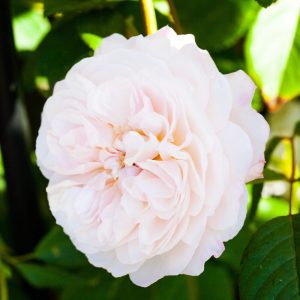Description
Tellima grandiflora, also known as Fringe Cups, is a perennial plant that belongs to the Saxifragaceae family. It is a low-growing, evergreen subshrub with a compact habit. It typically grows to a height of about 30cm (1 ft) and a width of about 45cm (1.5 ft). It has green foliage and large, cup-shaped, cream flowers that bloom in late spring to early summer. The flowers have a fringed or ruffled appearance, giving the plant its common name. It prefers partial shade and well-drained soil. It is commonly used as an ornamental plant in gardens and landscapes, it can be used as a ground cover, in rock gardens or as a cut flower. It can be propagated by division of the clumps or by seed. It is hardy and it can survive in cold temperatures.
Key Facts
- Common Name(s):Fringe cups
- Hardiness:Fully hardy
- How big will I get? Tellima grandiflora can grow to a height of 0.8m and a spread of 0.5m.
- Did You Know That:T. grandiflora is found in a wide range of habitats, from coastal bluffs, to montane meadows, to subalpine and alpine areas?
Plant Calendar
A rough guide to how this plant will change through the year.
| Jan | Feb | Mar | Apr | May | June | July | Aug | Sept | Oct | Nov | Dec | |
| Flowering Time |  |
 |
||||||||||
| Foliage Colour |  |
 |
 |
 |
 |
 |
 |
 |
 |
| J | F | M | A | M | J | J | A | S | O | N | D |
 |
 |
||||||||||
 |
 |
 |
 |
 |
 |
 |
 |
 |
Care Guide

Soil Requirements
Tellima grandiflora prefers moist but well-draining soil. This plant can grow in soil with a wide range of pH levels, it is not picky about the pH level of the soil.

Best Position
Tellima grandiflora prefers a sheltered position and is a very versatile plant that can cope with full shade, partial shade, or full sun.

Maintenance
Tellima grandiflora will benefit from deadheading after it finishes flowering this will help the plant by redirecting energy from seed production to flower and root production.

Pest, Diseases and Wildlife
Tellima grandiflora can have problems with slugs, and it tends not to have problems with diseases. It is not considered to be toxic.







